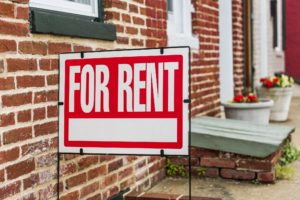 CoreLogic's Single-Family Rent Index, "which analyzes single-family rent price changes nationally and across more than 80 metropolitan areas," reported this week that U.S. single-family rent growth stabilized for the first time since the beginning of the pandemic.
CoreLogic's Single-Family Rent Index, "which analyzes single-family rent price changes nationally and across more than 80 metropolitan areas," reported this week that U.S. single-family rent growth stabilized for the first time since the beginning of the pandemic.
CoreLogic's July 2020 data showed a national year-over-year rent increase measuring 1.7%, That's down from July 2019's 2.9% YOY increase, and it represents the first stabilization in rent price growth since COVID-19 began impacting the nation earlier this year.
According to CoreLogic's Index, "In February, the coronavirus (COVID-19) pandemic set off a chain reaction in the rental market. Unemployment rates skyrocketed, leaving cash-strapped renters struggling to make ends meet and landlords lowering rates in the hopes of keeping their tenants, and local economies, afloat. Rent increases slowed sharply from an average of 2.9% in the first quarter of 2020 to 1.7% in May and 1.4% in June."
“Increases in single-family rent prices slowed dramatically this spring as the nation began to face the economic impact of the pandemic. As job losses slowed in July, rent growth steadied,” said Molly Boesel, Principal Economist at CoreLogic. “However, increases in rents should remain sluggish until the economy starts to experience employment gains.”
At 4.7%—and for the 20th consecutive month—Phoenix, Arizona, experienced the highest year-over-year hike in single-family rents in June. That said, compared to its average growth rate of 6.5% in Q1 2020, rent growth there has begun to decelerate. Phoenix was followed by Tucson, Arizona, which inched up 4.1% in rent price growth in June, followed by Charlotte, North Carolina at 3.4%.
Meanwhile, CoreLogic reports that areas that traditionally depend on tourism to help shore up their economy saw annual declines in their rent prices: Honolulu, Los Angeles, Miami, and Boston all saw declines, with Honolulu experiencing the worst drop at -1.3%.
CoreLogic studies a quartet of tiers of rental prices for a precise look at prices of single-family rentals. In June, prices took a hit across all tiers, with a sustained widening gulf between the low-end and high-end tiers. In June, the national single-family rent growth across the four tiers, and the year-over-year changes, were as follows:
- Lower-priced (75% or less than the regional median): 2.5%, down from 3.7% in June 2019
- Lower-middle priced (75% to 100% of the regional median): 1.5%, down from 3.1% in June 2019
- Higher-middle priced (100% to 125% of the regional median): 1.4%, down from 6% in June 2019
- Higher-priced (125% or more than the regional median): 1%, down from 2.5% in June 2019

 DSNews The homepage of the servicing industry
DSNews The homepage of the servicing industry









